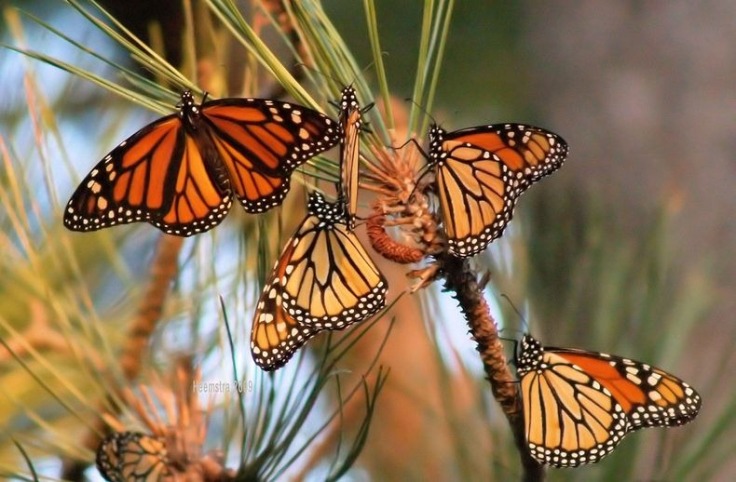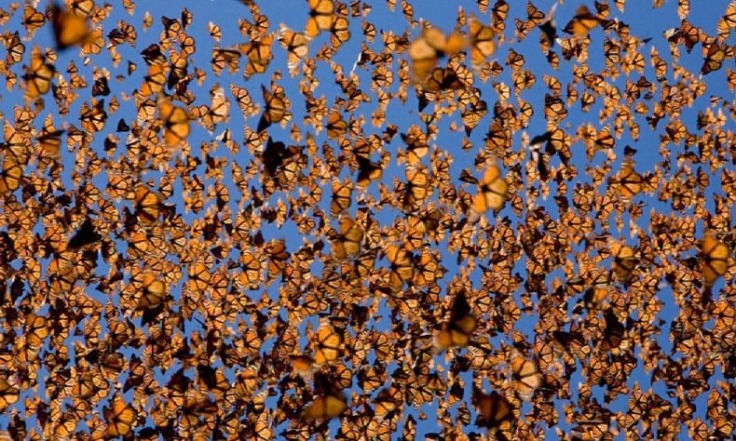
Monarch butterflies are the most colorful and most beautiful of all butterflies, but there are many more facts about monarch butterflies that the people who have been studying them for years, entomologists, students, and others, have found out.

Did you know that the monarch butterflies that live in North America migrate? Monarch butterflies are the only insect to migrate up to 2,500 miles to get out of the cold weather and hibernate. But not all monarch butterflies migrate; only the fourth generation of monarchs can migrate each year because the first three generations die after about six weeks from escaping their cocoons.

Did you know that monarch butterflies go through four generations each year? The first three generations hatch from their cocoon state (also known as the pupa or chrysalis state) and live for up to six weeks, but the fourth generation continues to live on for up to six or eight months so that they can migrate to a warmer climate, hibernate, and then start a new first generation in the spring time.

Female monarch butterflies have several hundred eggs to lay during their short life in the spring time. Monarch butterfly larvae eat milkweed and they need them to live. Did you know that milkweed plants are being cut down to make roads and houses and the monarch butterfly population is decreasing because of this? Conservationists are working hard to bring back the milkweeds so that monarch butterflies have a place to live and grow.

Most people think that monarch butterflies only have two life stages, the cocoon and the butterfly stages. But monarch butterflies actually go through four stages in their life cycle. They start out as an egg, then hatch into larvae (a caterpillar), and then wrap up in the cocoon, and then they go through the metamorphosis into a butterfly while they are in the cocoon.

Once a monarch butterfly is an adult (after the metamorphosis into a full grown butterfly) it can eat the nectar from any flower, not just the milkweed plant. Only the caterpillars need the milkweed plant to live.

Did you know that monarch butterflies are poisonous? They won’t harm humans, but the chemicals from the milkweed plant that they eat when they are in the larvae stage builds up inside of them and gives them a poisonous defense against predators like frogs, birds, mice and lizards.

Do you know how to tell a male from a female monarch butterfly? The male monarchs have a black spot on each of the hind wings over a vein. The female monarch butterfly does not have this spot. Many people think that only the male monarch butterfly is beautiful, but that is simply not true. Every monarch butterfly is beautiful.

Migration
Monarch butterflies are not able to survive the cold winters in most of the United States so they migrate south and west each autumn to escape the cold weather. The monarch migration usually starts in about October of each year, but can start earlier if the weather turns colder sooner than that.

The monarch butterflies will spend their winter hibernation in Mexico and some parts of Southern California where it is warm all year long. If the monarch lives in the Eastern states, usually east of the Rocky Mountains, it will migrate to Mexico and hibernate in oyamel fir trees. If the monarch butterfly lives west of the Rocky Mountains, then it will hibernate in and around Pacific Grove, California in eucalyptus trees.

Monarch butterflies use the very same trees each and every year when they migrate, which seems odd because they aren’t the same butterflies that were there last year. These are the new fourth generation of monarch butterflies, so how do they know which trees are the right ones to hibernate in? Monarch butterflies are the only insect that migrates to a warmer climate that is 2,500 miles away each year.

The Monarch butterfly migrates for 2 reasons. They cannot withstand freezing weather in the north and central continental climates in the winter. Also, the larval food plants do not grow in their winter overwintering sites, so the spring generation must fly back north to places where the plants are plentiful.

Courtesy : www.monarch-butterfly.com, Google, Image credits : Amuzing planet
Related articles
- Where are all the monarch butterflies this year? (ctvnews.ca)
- Decrease in monarch butterfly population raises concern (usatoday.com)
- Stratford butterfly expert Barb Hacking is worried as monarchs fail to show up in her garden this season (lfpress.com)
- Monarch Butterflies Are Focus Of Festival At Local Arboretum (philadelphia.cbslocal.com)
- Monarch Butterfly (moonlightelder.wordpress.com)
- Windsor woman takes on monarch rearing (blogs.windsorstar.com)
- Monarch butterflies migration path tracked by generations for first time (eurekalert.org)

Thanks for the linking.. 🙂
LikeLike
Wow ~ just so amazing! Thanks for sharing.
LikeLike
Thanks 🙂 will share more like these..
LikeLike